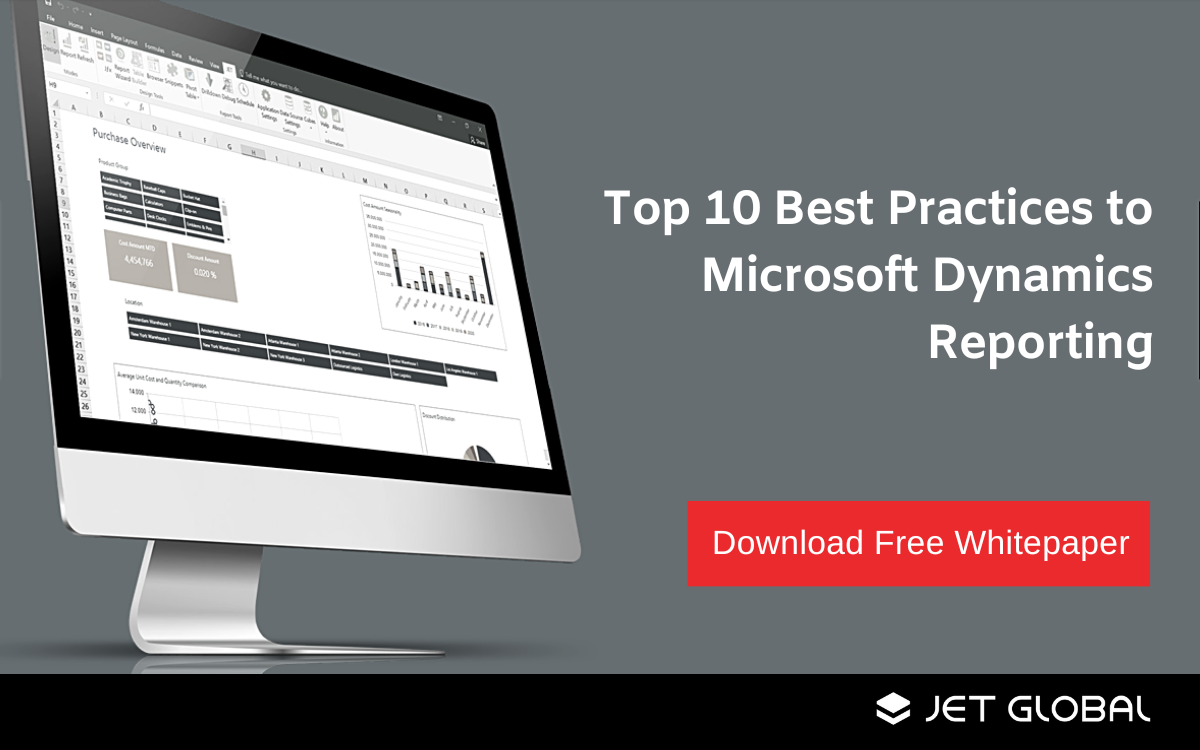In an increasingly data-driven economy, businesses are collecting more data from more sources across their operations than ever before.
Because of the sheer volume of data being collected, it's hard to use it effectively.. You need data analytics to process this data effectively and generate useful insights from it.
But don’t just take our word for it. We’ve picked the minds of two experts in data analytics, and asked them to share their top tips on utilising data analytics tools in your business to best effect.
Ryan Heng | Insightsoftware
%20(1).png?width=150&height=200&name=MicrosoftTeams-image%20(3)%20(1).png)
1. Who should be using data analytics in their business operations?
"Regardless of industry and organization size, data analytics is crucial for all businesses to cut through the noise of data and zero in on the data that fundamentally matters when it comes to improving the business.
Within the business, data analytics can be used by anyone who wants to make data-driven decisions or gain insights from data, for example:
- Marketing professionals to track the effectiveness of campaigns and target their marketing efforts more effectively.
- Finance professionals to identify trends and make predictions about performance.
- Operations managers to analyze data on production efficiency and identify opportunities for improvement.
- Human resource professionals to analyze employee data and identify patterns and trends that can help improve retention and productivity.
Data analytics is useful for anyone who wants to better understand their data, quickly gain insights, and make better decisions.”
2. What kind of data analytics tools should you be using?
“As there are many data analytics tools available for businesses to use, here are a few key factors to consider when choosing the tool to use and implement:
- Integration with your ERP system/data sources
- Specific needs and goals
- Complexity of using the tool
- Skills and resources available
At insightsoftware, we offer different analytics solutions that are developed to integrate with different ERP systems.
For Microsoft Dynamics customers for example, we have Jet Analytics which:
- Is developed to integrate with Microsoft Dynamics and inherits user permissions setup in Microsoft Dynamics so that permissions do not need to be setup again running reports directly from the ERP system.
- Allows users to drill down from summary level data in reports directly into Microsoft Dynamics to see transaction details and perform deeper analysis.
- Allows Microsoft Dynamics customers to move from one version of Dynamics to another without having the recreate all their reports and BI (Business Intelligence) dashboards
- Provides an out-of-the-box data model including a pre-built data warehouse and 6 BI cubes for Microsoft Dynamics which users do not need to develop from scratch.
- Provides out-of-the-box reports and dashboard templates users can refresh against their own data and gain insights upon installation.
- Is an Excel-based add-in empowering non-technical users with a familiar UI to run and design reports themselves without heavy reliance on IT and technical resources.
Ultimately, using the right data analytics tool like Jet Analytics for Microsoft Dynamics lead to quicker, less costly, and lower risk BI and analytics implementations. As AFON is a long-time partner of insightsoftware, you can reach out to AFON to give advice on the analytics solution that is suitable for your needs.”
3. When should you consider implementing these tools in your business?
“There are several use cases for implementing data analytics in your business:
- If you have a large amount of data and need to make sense of it and extract valuable insights.
- If you have data from different sources/systems, data analytics can help consolidate your data into a single source of truth where users can analyze data from. A common example is customers upgrading or migrating to a new ERP system and therefore need to consolidate their historical and new data.
- When you need to make data-driven decisions.
- When you want to improve efficiency and identify patterns and trends that can help you streamline processes and increase efficiency.
- When you want to better understand your customers’ needs and preferences, which can help you improve the customer experience.
- When you want to increase sales and revenue by identifying new opportunities.”
4. Where in your business can you apply data analytics to your processes?
“Data analytics can be applied across all stages of the business process, for example:
- Planning: to identify trends and patterns to support forecasting and budgeting.
- Execution: to monitor and optimize current processes by identifying bottlenecks and inefficiencies, therefore, suggesting ways to improve them.
- Control: to monitor key performance indicators (KPIs) and deviations from targets so that you can take corrective action.
- Decision-making: to support data driven decision-making at all levels within the business by providing the data and insights needed.”
5. Why should you implement data analytics in your business?
“Here are some common reasons for implementing data analytics:
- To make better informed decisions and identify patterns and trends in your data, which can inform decision-making, rather than relying on instinct or gut feeling.
- To improve efficiency by analyzing data on how processes are currently working, you can identify inefficiencies and areas for improvement.
- To learn more about your customers, including their needs, preferences, and behaviors.
- To stay ahead of your competitors by identifying new opportunities.
- To drive revenue by identifying new revenue streams or to optimize existing ones to increase their overall revenue.
Overall, data analytics can help you make better decisions, improve your operations, and drive growth.”
6. How can you start with the implementation and use of data analytics tools?
“Here are some steps you can follow to start implementing data analytics in your business:
- Define your goals and define what you want to achieve. E.g., see common reasons business implement data analytics above.
- Determine what data you need to collect to achieve your goals. This may include data on your customers, sales, operations, or other areas of your business.
- Set up systems like ERP systems to collect, manage and store the data you need.
- Extract, transform, consolidate and analyze the data using tools for easy data visualization to extract insights.
- Communicate and share insights and recommendations with relevant stakeholders within your organization.
- Use the insights from your analysis to make data-driven decisions and implement changes in your business.
- Regularly review the requirements and results of your data analytics efforts and adjust where needed.”
Edwin Tam | Digital Agency
.png?width=150&height=200&name=Untitled%20design%20(8).png)
1. Who should be using data analytics in their business operations?
"Short answer: Everyone.
Long answer: As long as you need evidence & data-backed insights in your work, you should use data analytics.
While that means data-driven insights will be exceedingly useful, you probably wouldn’t need the most powerful analytics tools, or cutting-edge technologies such as AI or ChatGPT.
What you’ll need is something that fits your work needs. Start by asking these questions:
- What problem am I trying to solve?
- Can this problem be solved if I Identified trends/found segments/made predictions/identify patterns/found areas of improvement?
- Do I need to scale the solution beyond hiring another intern or headcounts?
If your answer to B) and C) are yes, then you’ll probably want to take a good look at some data analytics solutions."
2. What kind of data analytics tools should you be using?
"In general, you’ll need 3 types of tools:
- Somewhere to store your data
This is your data warehouse, ERP System, or CDP. It’s essentially a big database that contains information, records, transactions and other data in one place that’s processed and ready for usage. No self-respecting analyst should have to hunt for data from Excel spreadsheets. - Applications to visualise your data
Tableau, Qikview, Power BI, Looker Studio lead the way. This is when you want to create reports and dashboards for clients or stakeholders; or a way to inspect your datasets visually to extract insights. - Analytic Platforms
These are platforms that support machine learning or forecasting. My preference is for low-code platforms – because not everyone can code – like KNIME, Excel (your simple spreadsheet can do regressions, ARIMA models, seasonality forecasts – surprised yet?), SAAS platforms (Azure Machine Learning Studio, Google Cloud AutoML etc), and stalwarts such as SPSS, JMP etc.
These tools enable the average joe to make leap from reading off spreadsheets to extracting insights that matter to you and your bosses."
3. When should you consider implementing these tools in your business?
"It really boils down to efficiency. A rule of thumb is that you’re spending more time getting the data or getting it into shape than actually doing anything with it.
Here are a few indicators:
- When you’re creating incredibly long and complicated formulae in Excel
- When you’re spending too much time getting your spreadsheets in the right formats and shape
- When no one knows what data your organisation possesses.
- When you’re spending too much time making data requests to other departments."
4. Where in your business can you apply data analytics to your processes?
"Every function really needs some kind of analytics. The question is how much – the bigger or more obfuscated the problem, the more you’ll need it.
Questions such as
- “Who are my customers? And who are more likely to buy from me?” [Sales]
- “Which prospects should I spend marketing money on?” [Marketing]
- “What are characteristics of high performing staff?” [HR]
are ripe for analytical processes and tools."
5. Why should you implement data analytics in your business?
"Because it can answer hard questions in a scalable way. Instead of sending people to solve the problem, we can build a tireless machine (i.e your dashboards, AI, or algorithms) to solve at scale and whenever it needs to be solved."
6. How can you start with the implementation and use of data analytics tools?
"As with all things new and possibly strange – start small. Think prototypes for small well-defined problems with a small group of receptive stakeholders. Show that it can work with scaled-down versions of data storages, simple dashboards, and possibly forecast methodologies.
Then dream bigger.
But whatever you do: don’t start with company-wide problems. That’s just too much change for folks to take in a day."
Ho Bing Zhao | AFON
.webp?width=150&height=200&name=Bing%20(1).webp)
1. Who should be using data analytics in their business operations?
“Data analytics can be useful for any business that collects data, as it can help organizations make more informed decisions by providing insights and trends that may not be immediately apparent from raw data.”
2. What kind of data analytics tools should you be using?
“There are many different data analytics tools available, and the right one for a business will depend on a variety of factors, including the size and needs of the organization, the type of data being analyzed, and the specific goals and objectives of the analysis.
Some common types of data analytics tools include:
- Spreadsheets and database software, which allow users to store, organize, and manipulate data. Microsoft Excel is the most common spreadsheet software used worldwide.
- Machine learning platforms, which allow users to build and train predictive models using data. PyTorch is one example.
- Business intelligence (BI) platforms, which provide a suite of tools for data visualization, reporting, and analysis. Microsoft Power BI is one example.
It's worth noting that many of these tools can be used for a wide range of data analytics tasks, and many businesses will use a combination of different tools to meet their specific needs.”
3. When should you consider implementing these tools in your business?
“There are a few signs that your business might benefit from implementing data analytics tools.
If you're making decisions based on gut feelings or anecdotal evidence, instead of hard evidence. Data analytics can help you make more informed decisions by providing objective, fact-based insights, rather than relying on subjective opinions or anecdotes.
Or, perhaps you're struggling to keep up with the competition. By using data analytics, you can identify opportunities for growth and improvement that you may have otherwise missed, and make data-driven decisions to stay ahead of the competition.”
4. Where in your business can you apply data analytics to your processes?
“Some specific examples of roles or departments that might benefit from using data analytics include:
- Marketing departments can use data analytics to better understand customer behaviour and preferences, and to identify trends and patterns that can inform marketing strategy.
- Sales teams can use data analytics to identify opportunities for upselling and cross-selling, and to optimise sales processes.
- Finance departments can use data analytics to forecast revenue, identify cost savings opportunities, and improve financial planning and budgeting.
- Human resource departments can use data analytics to optimise recruiting and retention efforts, and to identify trends and patterns in employee behaviour and performance.
- Operations teams can use data analytics to optimize supply chain management, identify bottlenecks and inefficiencies in processes, and improve overall operational efficiency.”
5. Why should you implement data analytics in your business?
“If you have a large volume of data, but you're not sure how to extract insights and value from it, data analytics tools can help you explore and analyze the data to identify trends and patterns.
Alternatively, you're looking for ways to improve efficiency and reduce costs. Data analytics can help you identify inefficiencies and areas for improvement in your business processes, which can lead to cost savings and increased efficiency.”
6. How can you start with the implementation and use of data analytics tools?
"The first step in implementing data analytics for your business is to identify the specific business problems and goals that you want to address. Once you have a clear understanding of these, you will then have an idea of what kind of data to collect.
You can then begin to gather and analyse the data that will be necessary to support your BI efforts. This may involve implementing new data collection and reporting systems, as well as training employees on how to use these tools effectively."
Use These Expert Tips To Use Data Analytics To Best Effect In Your Business
We hope that these tips from our featured experts will give you some idea to how you can use data analytics to best effect for the success of your business.
If you’d like to learn even more about how you can use a data analytics tool like Jet Reports to its full potential, click on the image below to find out the top best practices for business reporting within Microsoft Dynamics.




